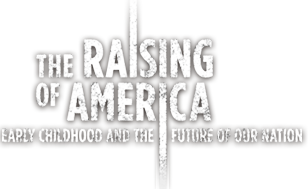The Neighborhood Matters
to watch purchased videos
Add to Your Favorites
Remove from Your Favorites
Clip Transcript
Erica, Leroy, and DaNayah walk through their neighborhood.
Leroy Campbell, father:
Do you want to go far out?
DaNayah, child:
Yeah, all the way.
Leroy Campbell:
All the way out?
DaNayah:
Up, up, and up and up.
Jack Shonkoff, Director, Center on the Developing Child at Harvard University:
Nobody does this alone. Nobody does this in isolation. The environment that the family lives in matters.
Dr. Renee Boynton-Jarrett, Pediatrician and Epidemiologist, Boston Medical Center:
Neighborhoods may simply not have an adequate opportunity structure to support the families optimally and the children optimally.
NARRATOR: Erica, Leroy and DaNayah live in the Boston neighborhood of Mattapan, which has struggled with disinvestment and racial segregation for decades. Here, unemployment is more than twice the national average. The banks have thrown 500 homes into foreclosure. 1 in 5 adults here reports living in persistent sadness.
john a. powell, Director, Haas Institute for a Fair & Inclusive Society, UC Berkeley:
Some people live in neighborhoods where there are not good schools, where there’s no tax base, that’s the structure that they live in and we look at how we’ve structured race in America, blacks and Latinos are more likely to live in those structures. And if you live in that structure, your life outcomes are severely truncated. We know that if we take the same family and expose them to high opportunity areas, the kids will do better.
James Heckman, Nobel Laureate in Economics, 2000, University of Chicago:
What we’ve seen is a tremendous disparity, a growing disparity between the haves and the have-nots, and with it disparities in the environments of children, so for the next generation, so it looks bad. And the problem is that if we don’t address those inequalities, we’re gonna find ourselves living with the consequences of those inequalities.


